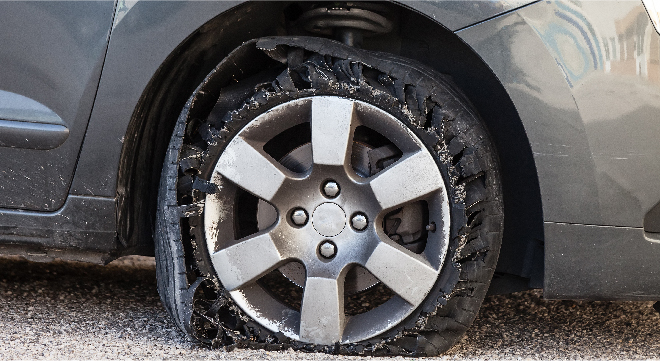The Ombudsman for Short-term Insurance (Osti) found that the conclusions drawn by a tyre specialist could not be relied on to decline a policyholder’s claim. The insurer used the specialist’s findings to support its view that the insured’s vehicle was unroadworthy when it collided with a wall.
The policy excluded cover when the car was involved in an accident and did not meet the roadworthy requirements as stated in the country’s road traffic legislation.
The policyholder said she lost control of her vehicle after a tyre burst. The vehicle drifted across the road and hit the boundary wall.
The insurer’s assessor said the tyres were not in a roadworthy condition, and the insurer appointed the tyre specialist to draw up report.
As a result of the lockdown, the specialist could not physically assess the tyres. Based on a digital/desktop assessment, he concluded that both rear tyres were worn. Further, the vehicle’s veering from right to left was a clear sign it had aquaplaned on the wet road surface.
But the policyholder produced evidence to challenge the worn tyres finding. She also questioned the reliability of the specialist’s report because it had been based on photos rather than measurements using a tyre depth gauge.
This resulted in a second report from the tyre specialist that not only countered the policyholder’s claims, but also said the tyres had been under-inflated.
So why did the Osti call the specialist’s conclusions “speculative”?
- The specialist had not disclosed his qualifications and experience, and thus failed to demonstrate that he was suitably qualified to express the opinion that he did.
- It was problematic that the specialist did not physically inspect the tyres, visit the accident scene, or conduct a reconstruction of the accident.
- The specialist had not produced evidence to support his assumption that the tyres were under-inflated.
- He did not know how much water was on the road or the speed at which the insured was travelling.
- His report was not based on independent and/or sufficient evidence to sustain the premise that the vehicle aquaplaned, or that it did so because of the condition of the tyres.
- There was no evidence to demonstrate that if the rear tyres were roadworthy, the accident would have been avoided altogether.
On the other hand, the Osti was satisfied that the insured had supplied sufficient evidence to demonstrate that the rear tyres were roadworthy, even after the accident.
He pointed out that policyholder was not responsible for the fact that the original tyres were no longer available for inspection. The insurer prejudiced itself when it declined the insured’s invitation to reassess the tyres before the vehicle was repaired.
The insurer accepted the Osti’s recommendation that it settle the claim.




Which insurer was this?
The ombudsman’s office does not reveal the names of the insurers.